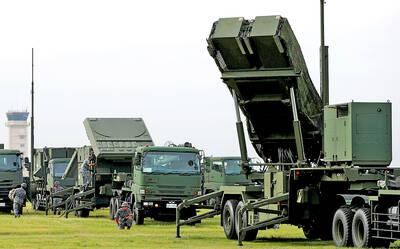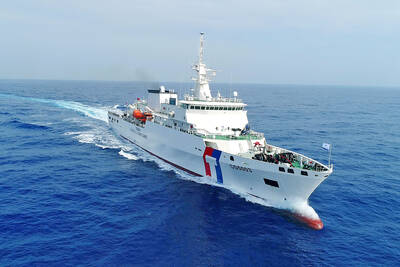US President Barack Obama will tomorrow wipe out another contentious aspect of his predecessor George W. Bush’s legacy by removing curbs on federal funding for embryonic stem-cell research.
The president will sign an executive order reversing a policy that critics say has hampered the fight into finding treatments for grave diseases like Alzheimer’s, Parkinson’s and diabetes, a senior administration official said.
The official would not divulge the exact wording of the order, but confirmed, on condition of anonymity, that it would be in line with Obama’s campaign vow to restore funding to embryonic stem-cell research.
The move will spark delight among scientists who have long campaigned for the Bush policy to be overturned, but was already running into fire from social conservatives and right-to-life groups.
Obama spelled out his campaign policy on stem-cell research last August in a list of answers to the Science Debate 2008 scientific lobby group.
“I strongly support expanding research on stem cells,” Obama wrote. “I believe that the restrictions that President Bush has placed on funding of human embryonic stem-cell research have handcuffed our scientists and hindered our ability to compete with other nations.”
Reports about Obama’s plans for tomorrow were immediately condemned by Family Research Council president Tony Perkins.
“Today’s news that President Obama will open the door to direct taxpayer funds for embryonic stem-cell research that encourages the destruction of human embryos is a slap in the face to Americans who believe in the dignity of all human life,” Perkins said.
John Boehner, the Republican leader in the House of Representatives said government money should be used to fund alternative stem-cell research that does not involve destroying an embryo.
“Republicans enthusiastically support adult, cord blood, and pluripotent stem cell research that have shown so much promise in recent years,” Boehner said. “The question is whether taxpayer dollars should be used to subsidize the destruction of precious human life. Millions of Americans strongly oppose that, and rightfully so.”
Bush barred federal funding for work on new lines of stem cells derived from human embryos in 2001, allowing research only on a small number of embryonic stem-cell lines that existed at that time.
He also several times vetoed legislation passed by Congress backing the research.
Obama reportedly told Democratic lawmakers shortly after his inauguration in January that he would guarantee lifting Bush-era restrictions on federal funding for stem-cell research.
“Barack Obama and [US Vice President] Joe Biden believe that we owe it to the American public to explore the potential of stem cells to treat the millions of people suffering from debilitating and life-threatening diseases,” his campaign said last year.
Bush argued that using human embryos for scientific research — which often involves their destruction — crossed a moral barrier and urged scientists to consider other alternatives.
Also See: US toughens its line on whaling

MILITARY BOOST: The procurement was planned after Washington recommended that Taiwan increase its stock of air defense missiles, a defense official said yesterday Taiwan is planning to order an additional four PAC-3 MSE systems and up to 500 missiles in response to an increasing number of missile sites on China’s east coast, a defense official said yesterday. The official, who spoke on condition of anonymity, said that the proposed order would be placed using the defense procurement special budget, adding that about NT$1 trillion (US$32,88 billion) has been allocated for the budget. The proposed acquisition would include launchers, missiles, and a lower tier air and missile defense radar system, they said The procurement was planned after the US military recommended that Taiwan increase

POLITICAL AGENDA: Beijing’s cross-strait Mid-Autumn Festival events are part of a ‘cultural united front’ aimed at promoting unification with Taiwan, academics said Local authorities in China have been inviting Taiwanese to participate in cross-strait Mid-Autumn Festival celebrations centered around ideals of “family and nation,” a move Taiwanese academics said politicizes the holiday to promote the idea of “one family” across the Taiwan Strait. Sources said that China’s Fujian Provincial Government is organizing about 20 cross-strait-themed events in cities including Quanzhou, Nanping, Sanming and Zhangzhou. In Zhangzhou, a festival scheduled for Wednesday is to showcase Minnan-language songs and budaixi (布袋戲) glove puppetry to highlight cultural similarities between Taiwan and the region. Elsewhere, Jiangsu Province is hosting more than 10 similar celebrations in Taizhou, Changzhou, Suzhou,

TWO HEAVYWEIGHTS: Trump and Xi respect each other, are in a unique position to do something great, and they want to do that together, the US envoy to China said The administration of US President Donald Trump has told Chinese President Xi Jinping (習近平) “we don’t want any coercion, but we want [the Taiwan dispute] resolved peacefully,” US ambassador to China David Perdue said in a TV interview on Thursday. Trump “has said very clearly, we are not changing the ‘one China’ policy, we are going to adhere to the Taiwan Relations Act, the three communiques and the ‘six assurances’ that were done under [former US president Ronald] Reagan,” Perdue told Joe Kernen, cohost of CNBC’s Squawk Box. The act, the Three Joint Communiques and the “six assurances” are guidelines for Washington

DEEPENING TIES: The two are boosting cooperation in response to China’s coercive actions and have signed MOUs on search-and-rescue and anti-smuggling efforts Taiwan and Japan are moving to normalize joint coast guard training and considering the inclusion of other allies, the Japanese Yomiuri Shimbun reported yesterday. Both nations’ coast guards in June sent vessels to the seas south of the Sakishima Islands to conduct joint training, the report said, adding that it was the second joint maritime training exercise since the nations severed formal diplomatic ties in September 1972. Japan dispatched the Nagoya Coast Guard’s Mizuho, a 134m, 6,000-tonne patrol vessel which can carry a helicopter, while the Coast Guard Administration (CGA) sent the 126m, 4,000-tonne Yunlin, one of its largest vessels, the report